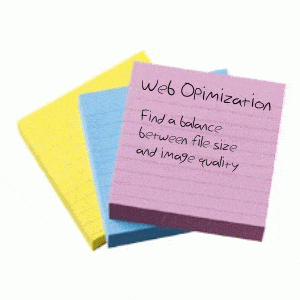On our previous post ‘Understanding Image Resolution: DPI in Print Vs. Web (The Very Basics)’ we talked about the importance of image resolution, file formats and sizes. This time we’ll focus on what to do to optimize it.
Image Resolution for the Web
The main concerns regarding images on the web are page load and showing up on searches. If you're interested in ranking higher one thing you should be aware of is that Google does not see images, but it can read its title and ALT tag. Naming your file according to the right keywords is often overlooked when uploading an image -you're in a hurry and you forget, it happens. But you should always add an image title and an Alt tag. What is an ALT tag you say? They are alternative denominations, like invisible names you can give to your files. ALT tags are used to give file descriptions. They should be coherent with the content. For example, let’s take the image below, the file name is ‘Albert Park Lake’. To be more descriptive, you can write ‘Lake with city skyline’ as an ALT Tag. So your image will appear on ‘lakes with city skylines’ searches.
Now what we're really concerned with is quality image saving. By default, images could be saved at 100% quality, however, 60% would be a more than acceptable number for most web images. Image editors allow you to change these values for a better balance between size and quality. We recommend shrinkpictures.com a useful free online tool for that. 72 dpias been the standard value for web images for years. Some consider it to be a myth, since it won’t necessarily make a difference unless you’re printing. A common mistake since you should be measuring in ppi -pixels per inch, not dots per inch! We find that it's a good as any go-to number, but it's in fact unimportant: the PPI of the screen is already set! What Is important is the number of megabytes and pixels your image has. Your 5 to 8 megapixel camera (like the one on your phone) will produce files of approx. 2mb, but the image will be around 2,000 or even 3,000 pixels wide. That's HUGE! Imagine if you add a gallery of those images; it will take forever to load! And they will not display well on most websites, since the content space of your average site goes from 600px to 800px wide. If you want to take it down from 3,000 PX to say 600px -you want to resize your image not to lose quality. The same goes for smaller images going to a larger format, although you might want to use Photoshop or similar for that! (See what GIGAOM had to say about MB and page load).
Print Image Resolution
Your goal with print resolution is to get crisp, images, smooth colors and high definition. Remember dots per inch? The standard value for print image resolution ranges between 150dpi and 300dpi, the specific number will depend on the printing size you are looking for. Remember that every dot is a piece of information. Posters might need 300dpi, but if you print a very large banner that is meant to be seen from the distance, 100 dpi should work. The DPI Cheat Sheet:
- 300 dpi is the standard for most high quality prints.
- 150dpi is the minimum standard for high quality photo reproduction for: book and booklet printing, magazines printing and sales sheets.
- 80 dpi is often used by Newspapers (and you can almost always see the dots!)
- Large Format Prints can go as low as 60-45dpi because people see them from afar.
- The higher the dpi the smoother the results!
Failing in resolution settings can turn your images into a pixelated print nightmare.
Talk to your printing company before making your order to avoid inconveniences (at 4over4 we always give you Free proofs before you print and guide you through the process). Optimize the file in terms of size and resolution before ordering the final print.
Also, you might also be interested in our previous post on Understanding Image Resolution: DPI in Print Vs. Web (The Very Basics).
Hopefully our posts have given you a clearer idea of what to look for on your next printing or online project. Remember that optimizing your images is your way of ensuring the best image quality you could possibly get from your files.
Feel free to comment below and browse our blog for other online printing topics.
Best of lucks!






